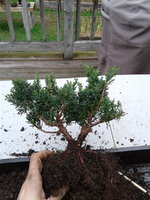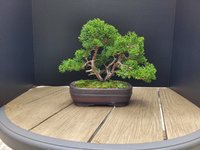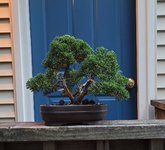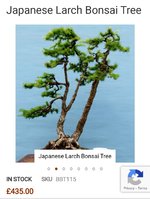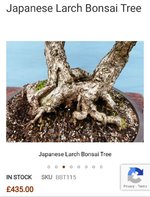I agree with
@rockm , these are difficult questions and hard to answer in a straightforward way
In a nutshell though, if "vendors / retailers / sellers" are your pathway to getting bonsai trees or material, then you will be often scratching your head wondering why these prices are so unpredictable and why they are seemingly unrelated to quality, and why it is that people on forums and in clubs/shows nevertheless have awesome trees or seem to be swiming in them (strong hint: make contact with your locals or pass up these opportunities).
I think one reason for the price weirdness / lack of quality (in the USA) is that the bonsai-unaware outnumber the bonsai-aware by some astronomically crazy ratio (1000 to 1? maybe worse?). For vendors easily found through google, the bonsai-unaware account for a supermajority of revenue though. Ornamental tree sales is a brutally difficult business to be in, prone to bankruptcies or catastrophes (fires, floods, pathogens, storms) which are then followed by bankruptcies. I have been a witness to that and have bonsai pots covered with the splatter of melted greenhouse plastic and wildfire ash.
For the sellers who appear in google search results, it doesn't make much sense to grow high-quality material if the vast majority of sold material is dead in under 6 months and was an impulse purchase from a person who has no intention of running a long term horticulture ultramarathon. So you will see trees that are wildly overpriced and aren't satisfying trees, and oceans of mallsai-grade material.
Beginners understandably walk into all this, seeing brand names / logos / websites / easy shipping and maybe get the impression that bonsai in the US is a big, reliable market -- durable products with stable lifecycle expectations, reasonable care guides, well-worn trails of how to do things, established supply chains, known answers for nutrition, ample literature/media on techniques and so on -- something that would be normal customer expectations for any hobby, if it were only archery, bedroom music studios, competitive lego, reef tanks, drones, photography, etc.
Non-casual bonsai (i.e. the type of bonsai where trees stay alive for more than 1 winter/summer) in North America is not like any of those other hobbies. Except for a specific rare scenario (
very wealthy tree collectors who can fly my teachers to their gardens on a private jet ), the owner must become highly-literate in nearly the entire process: Transitioning root systems out of native/nursery soil and into bonsai-ready horticultural setups. Building root systems. Building trunks and canopies. Evolving trees to be ready for a bonsai pot, and evolving their canopies and root systems once they are in that pot. In addition to that, everyone who doesn't live in an area where answers for questions of supply, soil, nutrition and climate are served out on a platter (eg: Oregon, California, Japan, etc), needs to also become a bit of an amateur botanist and horticulturalist to find what works.
All of that to say that this:
In the long run, it was always going to be a non-negotiable fact that -- unless you own a helipad -- you were going to have to become
pretty damn fluent in tree manipulation and growing within the first 3 or 4 years of entering the hobby. This means that everyone that stays in the hobby for more than a couple winters inevitably becomes their own key to ever-better material with each passing year because they know how to build trees. Stay active in the hobby and initially devote a larger share of your bonsai budget (money, time, effort) into education. The rest can go to very inexpensive pre-bonsai material (i.e. the kind sold by (but not only by) Left Coast Bonsai), or to landscape nursery material (world-class professionals raid landscape nurseries for material all the time!) or to native material you can (legally/ethically) collect from local lands. Dive into education before buying a ton of trees. Knowledge of techniques gained through a gradual laddering up from humble material through to more daring attempts will get you up to your eyeballs in good trees and promising material in just a couple years.
One more tidbit that doesn't really fit into the above: Some time after your appreciation sharpens for the sheer volume/breadth of technique applied over long time scales in growing trunks/nebari, I would recommend seeing some field grown material IN PERSON up close. I stared shitty grainy thumbnail-sized Telperion tree listings on their site going "
WTF? $1200 for that simple thing????" a million times before finally seeing one of those beasts in person and realizing my mistake. A pine I can't even fit in my car and that has been field grown for 20 years
just for bonsai is expensive for a damn good reason. My eyes weren't well-tuned to good material at the time. Consider this angle when looking at the listings of some reputably-good sellers and thinking to yourself "
what am I paying for here?". This is true of even the smallest/youngest pre-bonsai material, where there is a difference between a raw tree-industry whip and a pine grown for genetics, nebari, and an initial bend in the trunk.

